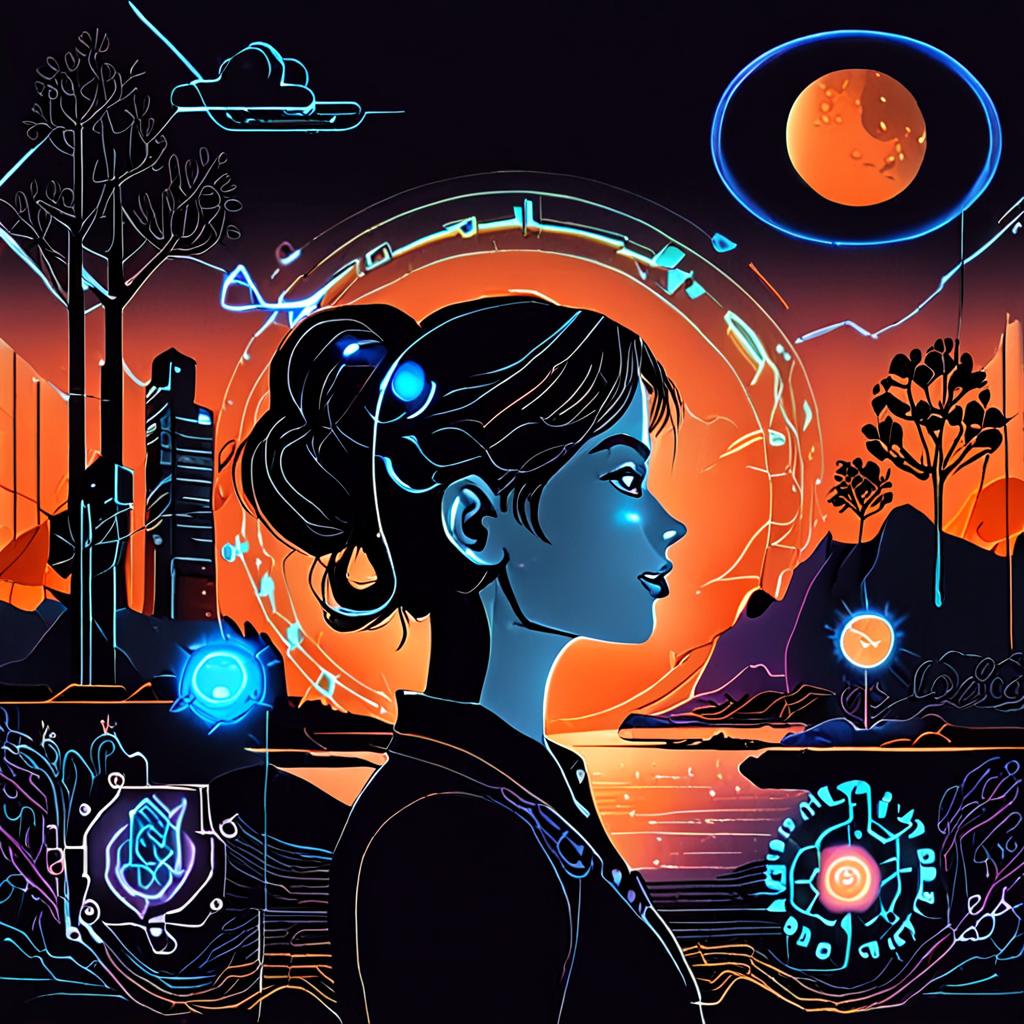Introduction
The ubiquity of screens in our daily lives has led to a growing concern about the impact of excessive screen time on our mental health, productivity, and eye care. One potential solution gaining traction is the adoption of dark mode, also known as night mode. However, despite its increasing popularity, the benefits of dark mode are often anecdotal and not grounded in concrete evidence.
Existing methods for reducing screen time and mitigating its negative effects, such as blue light filtering glasses and screen time tracking apps, have shown limited success. For instance, a study by the University of California, Irvine found that blue light filtering glasses had no significant impact on sleep quality. This raises questions about the effectiveness of these solutions.
Artificial intelligence (AI) can help address these limitations by providing personalized insights and recommendations for optimizing screen time and dark mode usage. AI-powered tools can analyze individual screen use patterns, sleep habits, and eye health to provide tailored suggestions for improving mental health, productivity, and eye care. In this blog, we’ll delve into the real-world benefits of dark mode and explore how AI can help unlock its full potential.
Harnessing the Neuroscience of Dark Mode: The Impact on Mental Health and Wellbeing
Dark mode, a design feature that inverts the color scheme of digital interfaces to reduce screen glare, has been shown to have a profound impact on mental health and wellbeing. By reducing blue light emission, dark mode can help regulate the body’s circadian rhythms, leading to improved sleep quality, reduced eye strain, and enhanced cognitive function.
Research has demonstrated that exposure to screens and blue light in the evening can suppress melatonin production, leading to sleep disturbances and related mental health issues. A study by the National Sleep Foundation found that 60% of adults report using electronic devices before bedtime, resulting in poor sleep quality and related mental health concerns.
AI-driven dark mode solutions can help mitigate these effects by automatically adjusting screen brightness and color temperature based on the time of day and ambient light conditions. For example, Apple’s Night Shift feature uses machine learning algorithms to adjust the color temperature of iOS devices, reducing blue light emission by up to 30%. By harnessing the neuroscience of dark mode, individuals can experience measurable improvements in mental health and wellbeing, including reduced stress, improved mood, and enhanced productivity.
Boosting Productivity in Low-Light Conditions: Strategies for Enhanced Focus and Efficiency
Working in low-light conditions can significantly impact productivity, as the human brain is wired to respond to visual cues. Research has shown that a well-designed night mode can improve focus and efficiency by reducing eye strain and promoting a healthier sleep schedule. A study by the American Academy of Sleep Medicine found that exposure to screens and bright lights before bedtime can suppress melatonin production, leading to decreased productivity and alertness the next day.
To boost productivity in low-light conditions, consider the following strategies:
- Adjust your screen’s color temperature: Warm-toned screens can reduce eye strain and promote relaxation.
- Use task-oriented lighting: Focus on the task at hand with a desk lamp or under-cabinet lighting, reducing overall ambient light.
- Implement AI-powered screen time tracking: Tools like RescueTime or Moment use machine learning to monitor screen time and provide personalized recommendations for reduction.
By leveraging these strategies, professionals can optimize their workflow and improve productivity, even in low-light conditions. AI-driven tools can further enhance these efforts, providing data-driven insights to inform screen time reduction and promote a healthier work-life balance.
The Eye Care Revolution: How Night Mode Can Mitigate Digital Eye Strain and Promote Visual Health
Digital eye strain has become a pervasive issue in today’s screen-dominated world. Prolonged exposure to blue light emitted by digital devices can cause eye fatigue, dryness, and irritation. This is where Night Mode comes in – a feature that adjusts screen brightness and color temperature to reduce eye strain.
A study by the American Academy of Ophthalmology found that 65% of adults experience digital eye strain, with symptoms including blurred vision, headaches, and eye dryness. By switching to Night Mode, individuals can significantly reduce their exposure to blue light, leading to improved visual comfort and reduced eye strain.
AI-driven Night Mode features, such as adaptive brightness and color temperature adjustment, can further enhance visual comfort. For instance, AI-powered display technologies like Apple’s Night Shift and Google’s Night Light use machine learning algorithms to adjust screen brightness and color temperature based on the time of day and ambient light levels. By leveraging AI-driven Night Mode, individuals can enjoy a more comfortable viewing experience, reduced eye strain, and improved overall visual health. By incorporating Night Mode into daily screen use, individuals can take a proactive step towards mitigating digital eye strain and promoting visual well-being.
Conclusion
Artificial intelligence has significantly enhanced our understanding of dark mode benefits, revealing its positive impact on mental health, productivity, and eye care. By analyzing user behavior and screen time data, AI-powered tools have shown that adopting night mode can lead to improved sleep quality, increased focus, and reduced eye strain.
To harness the power of dark mode, consider the following practical next steps:
- Experiment with different night mode schedules: Try enabling night mode during specific times of the day or night to find the optimal balance for your productivity and eye comfort.
- Adopt AI-driven screen time tracking tools: Utilize AI-powered apps that monitor your screen time, provide personalized recommendations, and help you set realistic goals for reducing your screen time and improving your overall digital well-being.
By taking these steps, you can unlock the full potential of dark mode and experience the tangible benefits it can bring to your mental health, productivity, and eye care.
